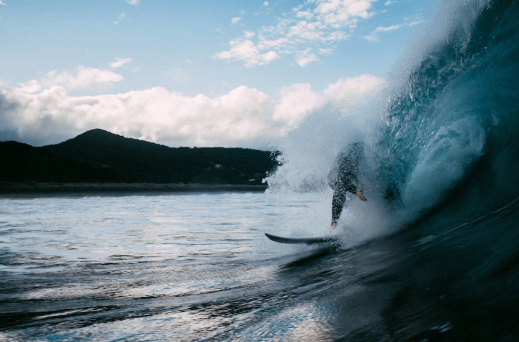Surfing during rain or storm
Rainy season on Mexico’s Pacific coast starts in July, goes harder in August and September and starts lowing down on October. A lot of questions come to mind and if you are on vacation at the beach it will feel like luck is not on your side… On the contrary.
Is it okay to surf when it rains?
This is a question a lot of people ask. And I say; Hell yes! you are gonna get wet anyway.
Sayulita and Punta de Mita are great spots to surf no matter your skills, with a tropical climate! meaning water temperature is the best, you might even find it a little hot which is nice (…unless it’s sudden and you’re near someone). And it is not just o.k. to surf when it rains, there are big advantages to do so;
Surfing under the rain adds a special touch to this sport, it really is a unique experience being on your board waiting for a set to come and just feel the rain pouring down your face, but let’s not get too romantic and back to the advantages; First of all the beach will be just for you (and some other surfers); parking spaces close to the beach unoccupied, stop worrying about zigzagging in between people to finally get to the beach, and no imprudent swimmers getting on your way while riding a wave.
Rain also calms the wind, and waves clean up creating ideal conditions!
Plus, really there’s nothing else to do. If you’re on your holiday, the wet weather options are even more dire… staying at your hotel should not be an option. So get yourself booked into a surf lesson and get properly wet.
The area hosts quite a bit of rain during the summer season, which is why we like to keep our guests informed about the facts regarding surfing in the rain or during storms.
What about Surfing during a storm?
This scenario changes when it comes to surfing during a lightning storm.
Due to the conductivity of salt water, the effects of lightning can reach up to 500 m from the place where it has impacted the surface of the water. The probability of being struck by lightning is still really low, but it is always better to be informed and careful.
In order to know the distance to which the storm is, we must count the seconds between the lightning and the thunder. With this data, we perform the following calculation:
Distance (km) = Dif Light and Thunder (secs) / 3.
With a time interval of fewer than 3 seconds is when we must take precautions, get out of the water and seek shelter, as it means that the storm is less than 1 kilometer away!
Prevention is key. Better to be safe than sorry!

